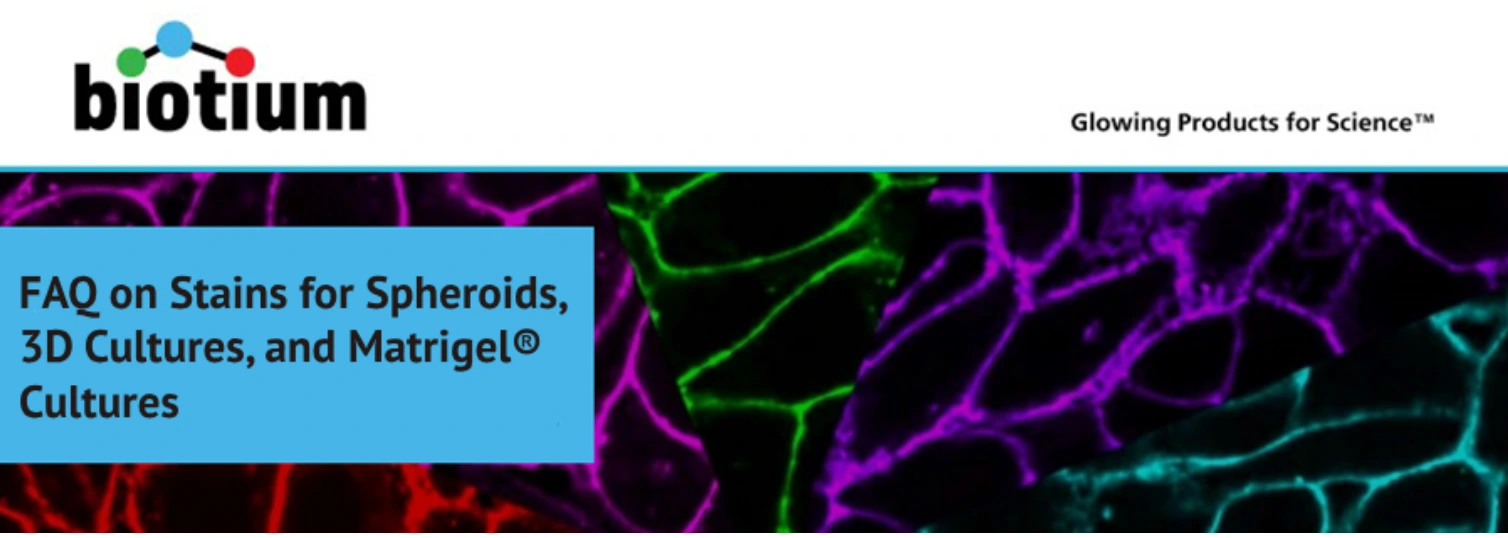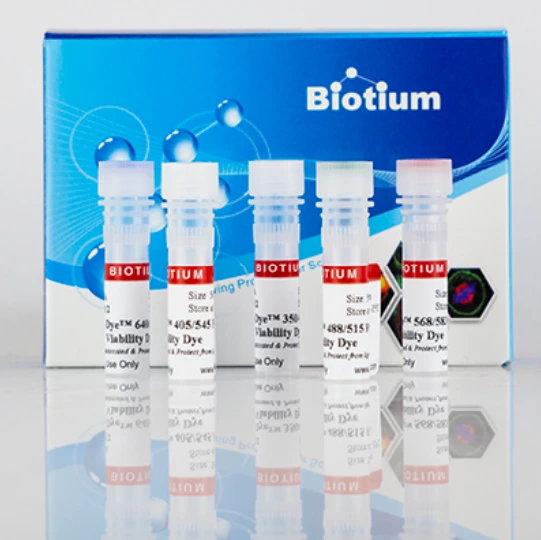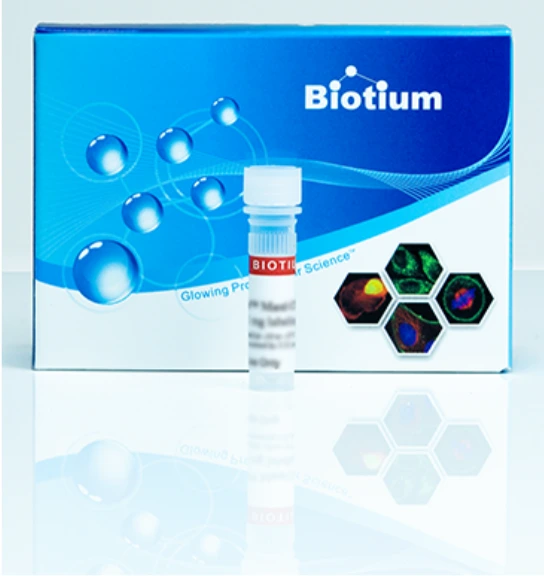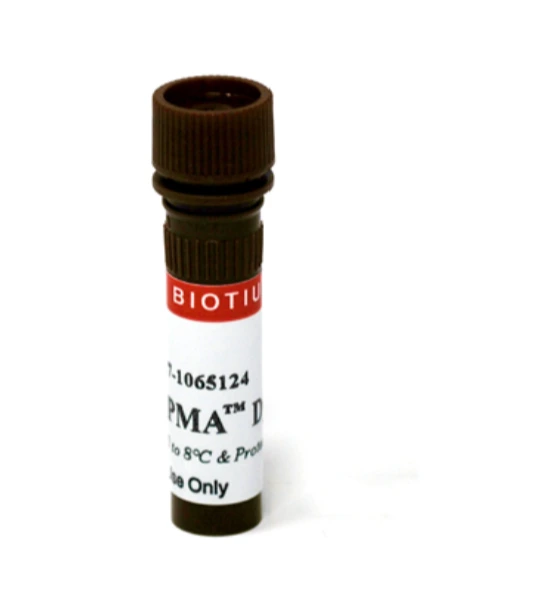Biotium FAQ on Stains for Spheroids, 3D Cultures, and Matrigel® Cultures

Are the Live-or-Dye™ viability dyes suitable for live/ dead staining in 3D cultures, organoids, Matrigel®, or organotypic tissue slices?

The Live-or-Dye™ fixable viability stains ( Live-or- Dye™ Fixable Viability Staining Kits - Biotium ) , including Live-or-Dye NucFix™ Red ( Live-or-Dye NucFix™ Red Staining Kit - Biotium ), are dead cell stains that are amine-reactive. This property of the dyes makes staining compatible with fixation but challenging in multi-cell layer systems such as 3D, Matrigel® or organoid cultures.
As the dyes are reactive, most of the staining would be restricted to the outer/ exposed cell layer(s). Longer incubation times to allow the dye to penetrate deeper into the cell layers would generally not be helpful as the labelling reaction is short-lived (15-30 min).
Click here to view recommendations for dyes suitable for 3D cultures or organoids.

Fixable nuclear dead cell stains: Options to consider would be NucSpot® Far-Red ( NucSpot® Far-Red, 1000X in DMSO - Biotium ). Designed to be an improved alternative to the more common dead cell stain 7-AAD, the dye is fixable to a degree.
Although generally more suitable for flow cytometry as its spectral properties are not appropriate for standard fluorescence microscopy, imaging using a confocal may be better as the Ex/Em can be more appropriately matched. Imaging soon after fixation and not storing the sample for extended periods post-fixation is also recommended as staining would deteriorate over time.

The viability dye PMA ( PMA dye | Propidium Monoazide | Biotium, Inc. ) may be another possibility. PMA, a photoreactive version of propidium iodide (PI), is generally used for viability PCR of bacteria. However, it can be used with mammalian cells (based on internal customer feedback) as fixable dead cell stain for flow cytometry. PMA is not fluorescent until it binds DNA. Subsequent exposure to bright light activates the dye and causes it to photo-crosslink to DNA, making it fixable.
Incubation of the dye with cells would need to be done in the dark, and the excess dye washed away before exposing to light for photo-crosslinking. Optimization for light exposure sources (LED lights can be used to avoid heat) and light intensity (bright enough to crosslink the dye without photobleaching; generally, proximity to a bright LED or halogen lamp is required, room light is not sufficient) may be required.
Please email [email protected] or call us at: +65 6777 1045 for more information on Biotium and their products.